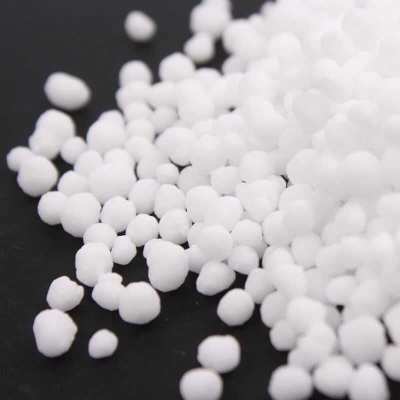-
Categories
-
Pharmaceutical Intermediates
-
Active Pharmaceutical Ingredients
-
Food Additives
- Industrial Coatings
- Agrochemicals
- Dyes and Pigments
- Surfactant
- Flavors and Fragrances
- Chemical Reagents
- Catalyst and Auxiliary
- Natural Products
- Inorganic Chemistry
-
Organic Chemistry
-
Biochemical Engineering
- Analytical Chemistry
- Cosmetic Ingredient
-
Pharmaceutical Intermediates
Promotion
ECHEMI Mall
Wholesale
Weekly Price
Exhibition
News
-
Trade Service
Graphene nanoribbons (GNR) are quasi-one-dimensional graphene nanostructures, which can exhibit metalloid or semiconductor properties depending on the structure
.
This characteristic depends on the chirality of the GNR, including width, lattice orientation and edge structure
.
According to different edge structures, GNR can be divided into "sawtooth type" (ZZ) and "armchair type" (AC)
.
GNR has high mobility and current carrying capacity, and due to quantum confinement and edge effects, it can open the band gap
.
This feature makes GNR a promising candidate material including nano-scale field effect transistors, spintronic devices and on-chip interconnects
.
However, on the surface of an insulating substrate, it is still difficult to controllably prepare a sub-5 nanometer wide GNR with edge specificity
.
? Recently, the team of Wang Haomin, a researcher at the Shanghai Institute of Microsystems and Information Technology, Chinese Academy of Sciences, prepared the chiral controllable GNR on the surface of hexagonal boron nitride (h-BN) for the first time and studied its transport properties
.
Related research results are titled Towards Chirality Control of Graphene Nanoribbons Embedded in Hexagonal Boron Nitride and published online in Nature Materials
.
? h-BN is a wide band gap two-dimensional material with excellent chemical and thermal stability.
It has a hexagonal honeycomb network crystal structure and an atomic level flat surface.
There are no surface dangling bonds and trapped charges, and it can maintain the GNR value.
Ideal substrate for levying electrical properties
.
? Previously, Wang Haomin's team achieved rapid growth of graphene domains (Nat.
Commun.
6, 6499 (2015)) and boundary control (Nanoscale, 9, 11475 (2017)) on the surface of h-BN by introducing silane for gas-phase catalysis.
); For the first time, by using h-BN trenches as a growth template, the controlled growth of oriented GNR is realized and the band gap is opened (Nat.
Commun.
8, 14703 (2017))
.
The above research lays the experimental foundation for the preparation of sub-5 nanometer-wide chiral controllable GNR on h-BN substrate
.
Figure 1.
GNR preparation method with controllable chirality embedded in h-BN? Researchers used different metal nanoparticles to etch the h-BN surface with straight edges and a specific orientation (ZZ and AC) with a monoatomic layer thickness In the trenches, a high-quality, orientation-controllable GNR with a width of less than 5 nanometers is prepared in the trench by chemical vapor deposition
.
In collaboration with the research group of Professor Jannik Meyer of the University of Vienna, the researchers used scanning transmission electron microscopy to reveal the in-plane and epitaxial growth at the boundary between graphene and h-BN, and the prepared GNR edge was atomically flat
.
? Further electrical transport measurement results show that all ZGNRs with a width of sub-5 nanometers show band gaps greater than 0.
4 eV, while the band gaps of narrow AGNRs vary greatly with width
.
Transistors made of GNR with a larger band gap have an on-off ratio greater than 105 at room temperature and a carrier mobility greater than 1500 cm2 V-1 s-1
.
In addition, a clear conductance peak is observed in the transfer curve of ZGNR with a width of 8-10 nm, but not in most AGNRs
.
The magnetic transport research of GNR shows that ZGNR has smaller permeability, while AGNR has higher permeability
.
? This research is the first to integrate chirality-controllable GNR in-plane into the h-BN lattice, which is an important step towards the development of high-performance integrated circuits with atomic layer thickness.
It has extremely thin thickness for manipulation and stacking.
The complex nano-integrated circuits provide new ways
.
The first unit of the research work is Shanghai Institute of Microsystems.
PhD students Wang Huishan and Chen Lingxiu of Shanghai Institute of Microsystems, Kenan Elibol from the University of Vienna, and He Li from Huazhong University of Science and Technology are the co-first authors of the paper, and Wang Haomin and Jannik Meyer are the papers.
Corresponding author
.
The research work was funded by the National Key Research and Development Program, the General Program of the National Natural Science Foundation of China, the Strategic Leading Science and Technology Project of the Chinese Academy of Sciences (Category B), and the Shanghai Natural Science Foundation of China
.
Figure 2.
Nanogrooves with specific orientation embedded in h-BN and GNRs with different chirals
.
This characteristic depends on the chirality of the GNR, including width, lattice orientation and edge structure
.
According to different edge structures, GNR can be divided into "sawtooth type" (ZZ) and "armchair type" (AC)
.
GNR has high mobility and current carrying capacity, and due to quantum confinement and edge effects, it can open the band gap
.
This feature makes GNR a promising candidate material including nano-scale field effect transistors, spintronic devices and on-chip interconnects
.
However, on the surface of an insulating substrate, it is still difficult to controllably prepare a sub-5 nanometer wide GNR with edge specificity
.
? Recently, the team of Wang Haomin, a researcher at the Shanghai Institute of Microsystems and Information Technology, Chinese Academy of Sciences, prepared the chiral controllable GNR on the surface of hexagonal boron nitride (h-BN) for the first time and studied its transport properties
.
Related research results are titled Towards Chirality Control of Graphene Nanoribbons Embedded in Hexagonal Boron Nitride and published online in Nature Materials
.
? h-BN is a wide band gap two-dimensional material with excellent chemical and thermal stability.
It has a hexagonal honeycomb network crystal structure and an atomic level flat surface.
There are no surface dangling bonds and trapped charges, and it can maintain the GNR value.
Ideal substrate for levying electrical properties
.
? Previously, Wang Haomin's team achieved rapid growth of graphene domains (Nat.
Commun.
6, 6499 (2015)) and boundary control (Nanoscale, 9, 11475 (2017)) on the surface of h-BN by introducing silane for gas-phase catalysis.
); For the first time, by using h-BN trenches as a growth template, the controlled growth of oriented GNR is realized and the band gap is opened (Nat.
Commun.
8, 14703 (2017))
.
The above research lays the experimental foundation for the preparation of sub-5 nanometer-wide chiral controllable GNR on h-BN substrate
.
Figure 1.
GNR preparation method with controllable chirality embedded in h-BN? Researchers used different metal nanoparticles to etch the h-BN surface with straight edges and a specific orientation (ZZ and AC) with a monoatomic layer thickness In the trenches, a high-quality, orientation-controllable GNR with a width of less than 5 nanometers is prepared in the trench by chemical vapor deposition
.
In collaboration with the research group of Professor Jannik Meyer of the University of Vienna, the researchers used scanning transmission electron microscopy to reveal the in-plane and epitaxial growth at the boundary between graphene and h-BN, and the prepared GNR edge was atomically flat
.
? Further electrical transport measurement results show that all ZGNRs with a width of sub-5 nanometers show band gaps greater than 0.
4 eV, while the band gaps of narrow AGNRs vary greatly with width
.
Transistors made of GNR with a larger band gap have an on-off ratio greater than 105 at room temperature and a carrier mobility greater than 1500 cm2 V-1 s-1
.
In addition, a clear conductance peak is observed in the transfer curve of ZGNR with a width of 8-10 nm, but not in most AGNRs
.
The magnetic transport research of GNR shows that ZGNR has smaller permeability, while AGNR has higher permeability
.
? This research is the first to integrate chirality-controllable GNR in-plane into the h-BN lattice, which is an important step towards the development of high-performance integrated circuits with atomic layer thickness.
It has extremely thin thickness for manipulation and stacking.
The complex nano-integrated circuits provide new ways
.
The first unit of the research work is Shanghai Institute of Microsystems.
PhD students Wang Huishan and Chen Lingxiu of Shanghai Institute of Microsystems, Kenan Elibol from the University of Vienna, and He Li from Huazhong University of Science and Technology are the co-first authors of the paper, and Wang Haomin and Jannik Meyer are the papers.
Corresponding author
.
The research work was funded by the National Key Research and Development Program, the General Program of the National Natural Science Foundation of China, the Strategic Leading Science and Technology Project of the Chinese Academy of Sciences (Category B), and the Shanghai Natural Science Foundation of China
.
Figure 2.
Nanogrooves with specific orientation embedded in h-BN and GNRs with different chirals







